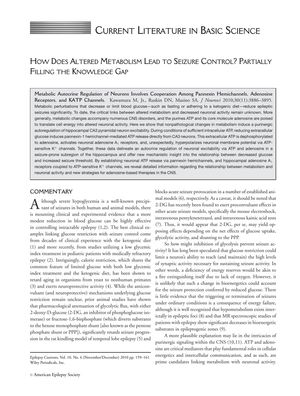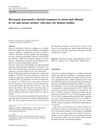Neurosteroids on the Epilepsy Chessboard: Keeping Seizures in Check
October 2010
in “
Epilepsy Currents
”

TLDR Ketogenic diet, neurosteroids, and HMGB1-TLR4 signaling pathway are potential targets for new epilepsy treatments.
The document from 2010 presents findings from three separate studies on the mechanisms underlying seizure control and potential treatments for epilepsy. The first study suggests that metabolic changes, such as those induced by a ketogenic diet, can decrease neuronal excitability and increase seizure threshold through a novel mechanism involving ATP release and adenosine A₁ receptor activation. The second study highlights the importance of neurosteroids, like allopregnanolone, in seizure regulation, showing that inhibiting neurosteroid synthesis increases seizure frequency in epileptic female rats, indicating that neurosteroid replacement could be a novel treatment for seizures. The third study identifies the role of HMGB1-TLR4 signaling in seizure development and recurrence, with findings that antagonists targeting this pathway may be effective for drug-resistant epilepsies. Each study contributes to the understanding of epilepsy and suggests new avenues for treatment, although further research is needed to translate these findings into clinical practice.
